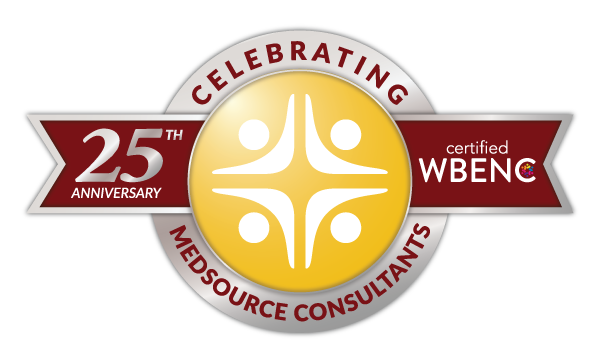JP Morgan’s 2018 Conference Insights That Healthcare Organizations Should be Considering
Steven Haggerty, Healthcare Strategist and CPA

In 1983, J.P. Morgan created Wall Street’s leading investor conference focused on healthcare. Now, 35 years later, the event is the premier healthcare investment symposium in the industry.
This January, J.P. Morgan hosted the 36th Annual Healthcare Conference in San Francisco, California. The conference consisted of over 400 companies and 8,000 attendees, continuing its tradition as a market force.
With such a large gathering of healthcare industry leaders, what were the most valuable insights from the conference that healthcare organizations can use today as they expand and grow their businesses?
Blurring Lines between Technology and Healthcare
The overlap of technology and healthcare is opening some of the most exciting opportunities of the decade. Recent tech innovations, such as the digital pill and gene editing, are making it much harder to identify where the IT/software arena ends and where the healthcare domain begins. In addition, digital imaging, genetics, apps, and artificial intelligence are enhancing traditional diagnostic tools such as X-rays, CT scans and MRIs. The prospect of artificial intelligence has significant implications for drug discovery and clinical trials. It is apparent that the use of big data, analytics, and artificial intelligence has become the disruptive force in healthcare.
Establishing a Brand
Branding has become an all too familiar buzzword in the corporate lexicon. Now the idea of branding is making its way into the healthcare industry, as organizations are weighing marketing concepts such as brand image and brand experience. This shift toward branding is a direct result of healthcare organizations viewing the patient as a consumer. The idea of a consumer-driven market is occurring at a time when the healthcare industry is experiencing fundamental changes in long-held ideologies surrounding care, quality, and delivery. Thus, healthcare organizations must attract and retain their customers by composing sound, cohesive branding strategies that include their digital presence, especially with respect to mobile and telehealth applications.
Understanding Merger & Acquisition Activity
So far in 2018, $156 billion in merger and acquisition deals have been inked in the healthcare industry per a Bloomberg report. Part of this explosion of M&A deals in healthcare can be attributed to the merger activity occurring within healthcare systems. Examples such as Jefferson Health merging with Einstein Health or Dignity Health possibly merging with Catholic Health Initiatives (which would form the second largest nonprofit health system in the country) all support the era of mega-mergers.
Furthermore, the overriding sentiment at the Conference was that the recent U.S. corporate tax cut and repatriation of funds benefit will spur M&A activity in the near term, particularly in pharma and biotech. What these new entities will invest in and why—whether pipeline, top-line growth or modern technologies– are all TBD, but we can definitely expect an uptick at least in the short term.
Finding New Revenue Streams
While mergers are dominating the industry, there are healthcare organizations that are not following the M&A path. At the conference, Salt Lake City-based Intermountain Healthcare gave an overview of a new business movement called “smart growth” or “asset light.” Following this strategy, Intermountain Healthcare has opened a “virtual hospital” to grow their telehealth business.
Between M&A activity and “smart growth” strategies, healthcare organizations overall are trying to find ways to expand their business models to increase growth and market share. Thus, many organizations are also exploring new revenue streams that produce higher yields.
The Opioid Epidemic: Solutions Must Emerge From the Industry
Each day in America, 175 people lose their lives to opioid addiction. By 2020, it is projected that opioid addiction will claim one million American lives. Not only is the loss of life a paramount concern, so is the financial impact the crisis is taking on the U.S. economy. It is estimated that “prescription drug misuse alone cost[s] the nation $78.5 billion in healthcare, law enforcement, and lost productivity.”
With such alarming statistics around the opioid epidemic, healthcare institutions must not only treat those suffering from opioid addiction but also devise solutions to manage the cost of this growing national crisis.
During this year’s conference, Geisinger Health System presented their investment in a CleanState Medicaid pilot. The pilot saw a “23% decrease in ER visits and 35% decrease in medical spending, which resulted in Geisinger breaking even on their investment in less than ten months.” It will be cost-saving measures like the Geisinger investment that will need to be utilized in order to get a handle on the cost of this growing epidemic.
Institutions Must Utilize Analytics
In 2015, just 10 percent of healthcare organizations were using analytics. Since then, there has been greater adoption of this technology across the industry especially with the emergence of artificial intelligence. Organizations that use analytics can significantly improve performance and reduce costs. However, for the healthcare industry, the future of analytics will dramatically depend on the ability to establish a mutually beneficial marriage of both clinical and financial data.
Planning Ahead: Navigating the Ever-Changing Marketplace
In 2018 and beyond, the healthcare industry will continue to experience significant course changes. It is imperative that healthcare organizations stay abreast of these changes to grow and thrive in the marketplace. Thus, it will be the business plans devised now, along with proposed solutions to existing industry problems, which will position and define the next generation of healthcare industry leaders.
Finding Top Talent Your Healthcare Company Needs
The amount of innovation in healthcare continues to be awe-inspiring and we expect these trends to drive increased need for talented medical staff. MedSource Consultants recruits and places talented and qualified medical professionals to healthcare entities nationwide. Partner with one of MedSource Consultant’s leading recruiting specialists today to learn more.
